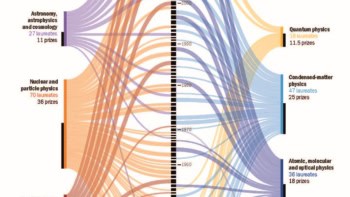By Hamish Johnston in Portland, Oregon
I know it’s a cliché, but the quantum world gets weirder the more you learn about how it works.
Yesterday I went to a talk by Graeme Smith of IBM Research, whose talk was entitled “Surprises in the theory of quantum communications”.
The surprise that Smith focused on is that two transmission channels – both of which are too noisy or lossy to transmit quantum information individually – can somehow join forces to create a very good channel for transmitting quantum information.
A classical transmission channel fails if you put a signal in one end and get nothing (or just noise) out the other end. By contrast, a quantum channel can fail if you input quantum information but its quantum nature is lost when it gets to the other end – information is transferred, but not quantum information.
But according to Smith, it’s possible that each channel is capable of transmitting a certain subset of the quantum information – but not all of it. The trick is to have two or more channels combine their quantum strengths to overcome their weaknesses.
“The weakness of one is made up for by the strength of the other,” explained Smith.
While it sounds like a great way to build a robust transmission channel from a bunch of bad connections, Smith said that it is not currently clear how to decide which bad channels can be grouped together to create a good channel.



